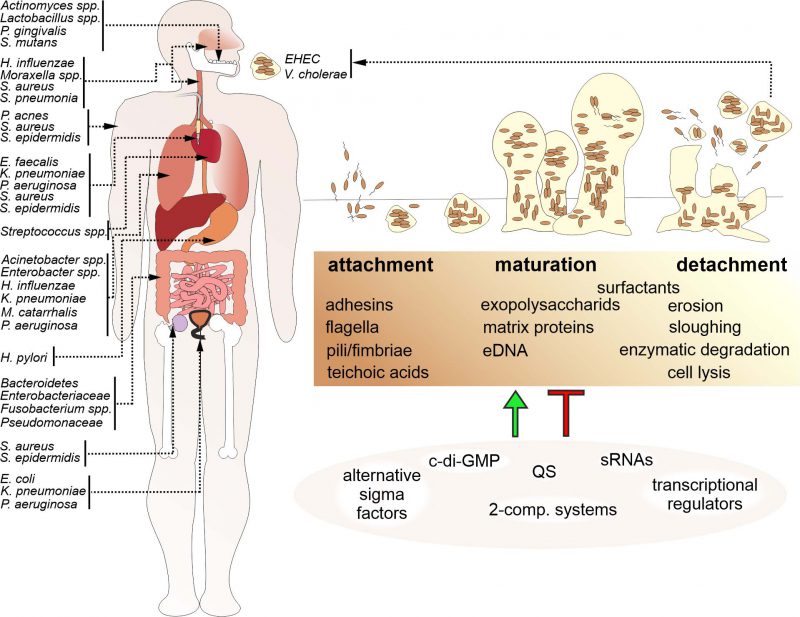Back to article: Biofilms by bacterial human pathogens: Clinical relevance - development, composition and regulation - therapeutical strategies
image description
FIGURE 1: Biofilm formation is a common feature among bacterial human pathogens. Bacterial biofilms by human pathogens are found on various tissues of the human body, on medical devices, e.g. catheters or prostheses, and in the environment, representing a reservoir for new infections. A schematic overview indicating representative bacterial species associated with biofilm-related diseases and their occurrence in the body (arrows) is presented on the left. Biofilm formation (upper right) is a multistep process organized in an attachment, maturation and detachment phase. Biofilm formation is controlled and modulated by several factors including bacterial surface molecules, secreted matrix effectors, as well as environmental components and stressors. Thus, it is not surprising that bacterial biofilm regulation (lower right) involves the interplay of several positive and negative regulatory cascades including quorum sensing systems (QS), regulatory small RNAs (sRNAs), alternative sigma factors, two-component systems and second messengers, such as c-di-GMP.

